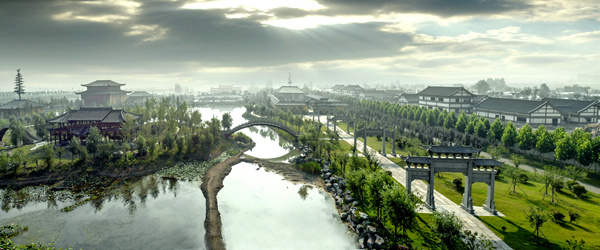

Some sections of the ancient Grand Canal to the north of the Yellow River currently hold no water.
The Sixian section has survived the test of time, thanks to its natural geographical advantage and continuous protection by the population along its banks, Zhang says.
Although the 28-km waterway has retained the same appearance as it had when it was first built, most parts were deemed short of meeting the UNESCO World Heritage qualification.
"Some older waterway maintenance work has accidentally compromised some of the original bed's structure," Zhang says, adding that only the aforementioned 5.8-km section has survived intact.
Things on that stretch of canal began to look up in 2007 when preparation work got underway for the UNESCO application.
Over the years, the county's administrators have worked to improve the environment around the Grand Canal section. Shanties have been relocated, and sewage systems have been put in place, says Wang Yongle, an official with the county's publicity department. Personnel have been assigned to regularly maintain the canal's environment.
Yu Chao was born and bred on the banks of that original stretch of the canal and has witnessed significant changes in his neighborhood.
"My family used to live in thatched and tile-roofed dwellings among the farmlands along the canal," the 34-year-old says.
The area was plagued by litter and domestic rubbish from the rural households, and pigs and fowl were let loose on the farmland, he recalls.
"The air stank."
But, the canal somehow managed to avoid human-created pollution, and Yu says that, as a child, he would watch fish swimming in the channel.
"Perhaps we, as locals, understood the importance of the waterway to our livelihoods," Yu says.